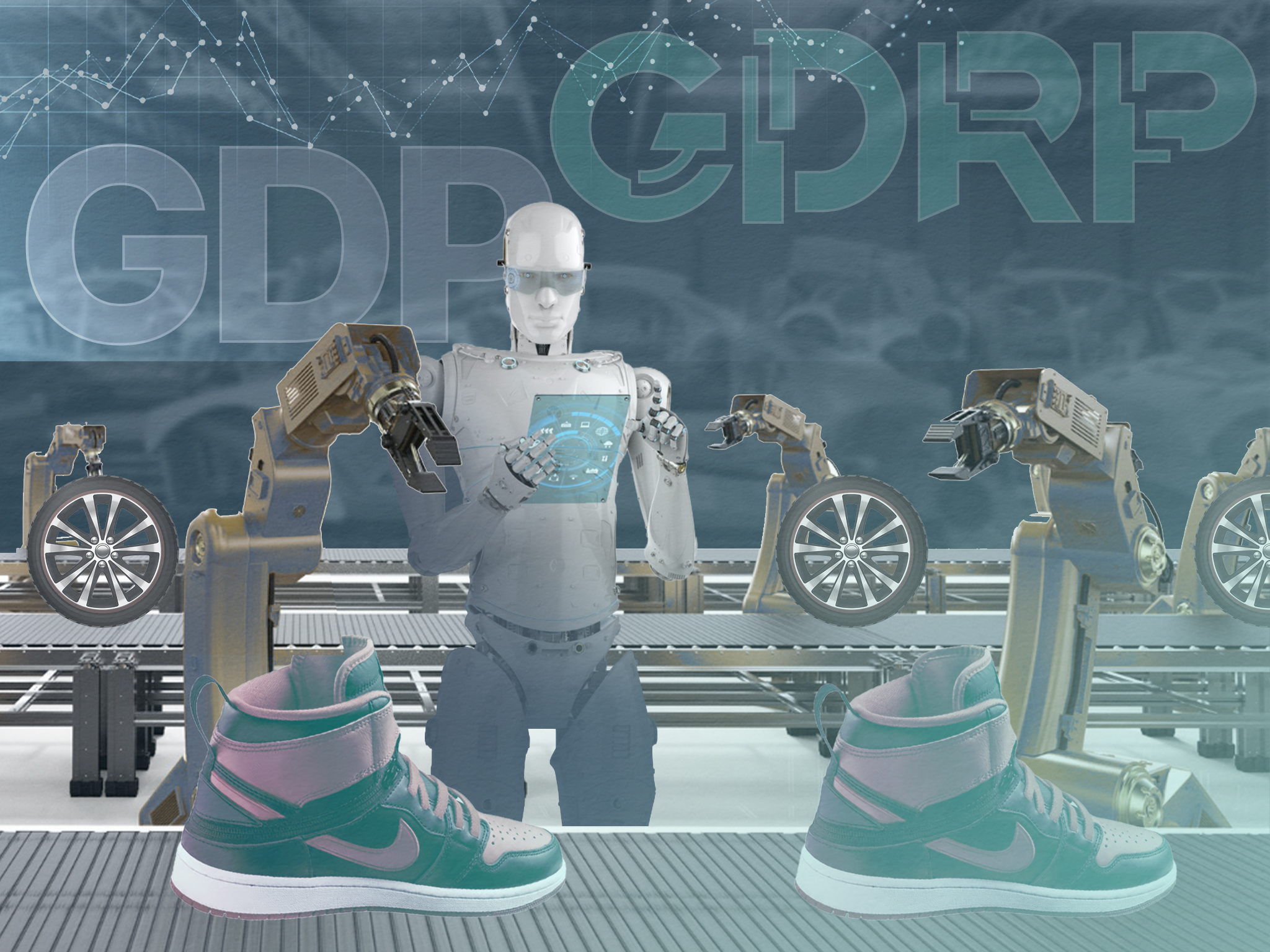Gross domestic product, or GDP, is the most-watched benchmark of economic progress and seen as a measure of a country’s productive strength. It may soon have to be split in two—GDP and GDRP, or gross domestic robot product—as manufacturing location becomes increasingly immaterial with the importance of robotic hardware and AI growing exponentially.
Today, the driving narrative in the current uproar about global tariffs and trade wars is the cost of goods, and where they’re being built. The US wants local production back, or at least closer to home, but lost in much of the discussion is the fact that humans probably won’t be doing the work for much longer. The robots are coming, and they’re going to make current economic fundamentals irrelevant.
Signs of a reality that would have sounded like science fiction just a few years ago are emerging everywhere, and it’s much bigger than software, AI language models and data processing alone: Tesla (NASDAQ: TSLA) is developing a humanoid robot called Optimus it says will be capable of performing “unsafe, repetitive or boring tasks,” Nvidia (NASDAQ: NVDA) is building out a new foundation model and computing platform called Jetson Thor to run human-like machines, and Alphabet (NASDAQ: GOOGL) is rapidly deploying driverless robotaxis onto real city streets.
“We’ve been laser-focused, and we’ll continue to be, on building the world’s best driver,” CEO Sundar Pichai said last week during an earnings call with investors. It goes without saying that it won’t be human.
“Waymo is now safely serving over a quarter of a million paid passenger trips each week,” he continued. “That’s up 5X from a year ago.” The driverless car unit is already operating in Silicon Valley, and it’s working with partners including Uber (NYSE: UBER) to roll out service in Austin, Atlanta, Washington and Miami.
The new technological frontier is merging AI with the physical world, and—whether it’s called automation or robotics—transportation and manufacturing will be among the first sectors to be reinvented.
US Commerce Secretary Howard Lutnick laid out this vision in multiple television appearances last month where he said that robots would play a key role in an American “manufacturing renaissance.” Nike (NYSE: NKE) may have trouble getting robots to make its sneakers at the moment, but it’s undoubtedly going to keep trying. It’s not a question of if it will eventually succeed, but when.
Falling labor costs
Technology research firm RethinkX predicts that robots will perform as much total labor as human beings by the end of the 2030s, and while expensive now—with a total lifetime cost for some units that could hit $200,000—they will be able to work nonstop and won’t ask for vacation, or take sick days.
“Humanoid robots today are the most expensive and least capable they will ever be,” it wrote in a recent report, adding that the cost of labor would fall toward zero in the 2040s as economic productivity explodes worldwide. “Any country which fails to go all-in on humanoid robots will look like it is standing still next to peers whose annual GDP-equivalent growth could exceed 10% by the early 2030s, and 100% by the late 2030s.”
Those are lofty projections, but it helps explain why many think that simmering beneath the global tariff standoff is the fact whoever has the best technology—not the cheapest human labor—is going to dominate the forthcoming economic paradigm. The competition is already fierce, and the fight for intellectual property rights will likely play an outsized role in ongoing trade talks.
Stanford University’s Institute for Human-Centered AI has shown that the US has the most robust AI ecosystem in the world, outperforming everyone else “by significant margins.” China currently leads when it comes to the installation of industrial robots, however, and the Asian country has also been trying to show off its advances in humanoids—many of which joined human racers in a Beijing half-marathon earlier this month. Hoping to take on Tesla, Shenzhen-based UBTech Robotics is gearing up to mass produce and sell the X-Humanoid robot for around $41,000.
In the US, Silicon Valley-based startup Figure just released a humanoid AI model called Helix it says unites perception, language understanding and “learned control” to offer advantages when it comes to speed and scalability. Nvidia CEO Jensen Huang said its platform for robots was based on human cognition, and rather than competing with biological people, he thinks they’ll simply help with demographic challenges as much of the world ages.
“By the end of this decade, the world is going to be at least 50 million workers short,” Huang said in a March speech. “We’d be more than delighted to pay them each $50,000 to come to work. We’re probably going to have to pay robots $50,000 a year to come to work, and so this is going to be a very, very large industry.”
Investors have remained somewhat skeptical. The Global X Robotics and Artificial Intelligence ETF (NASDAQ: BOTZ), for example, has declined 10.7% year-to-date compared to a contraction of 4% seen in the S&P 500. The ROBO Global Robotics and Automation Index ETF (NYSE: ROBO) lost 8.9% over the same period. The end destination may be getting clearer, but the road there will be bumpy with no guaranteed winners.




Comments